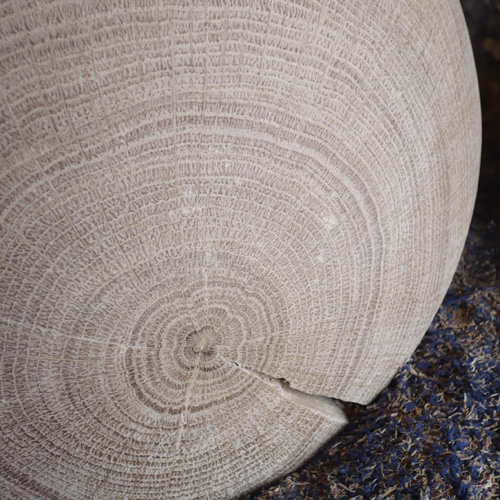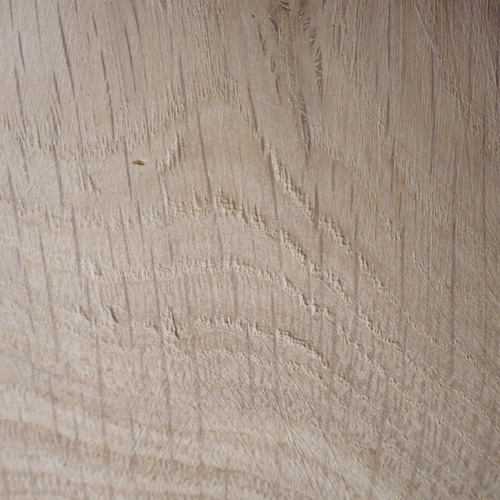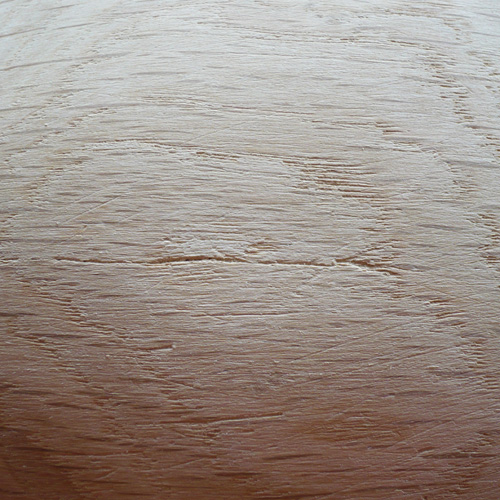
The light dots above the central core are left overs from the rasp. And then of course there is the crack…

Differences in the hardness of the wood between annual rings of the tree lead to rough areas that can’t be smoothed by grinding. And there are still scratches from the file in the upper right corner and the lower part.
5 – 2020
Actually it is more than just accepting it. It is living with it, adapting to the fact, even celebrating it.
My teacher once said. “A perfect form – e.g. a sphere – is dead.” For example, a piece of wood shaped by a CNC machine according to mathematical measurements into a perfect (or near perfect, because even machines have flaws) sphere has the charisma of a machine-made thing. Its dead. Whereas the natural flaws of a hand made sphere bring the form to life. It breathes.

A fissure in the wood in the middle running too deep to get rif of it. And left over scratches from the file as diagonal lines crossing the grain.
So accepting imperfection in my sculptures has been a constant learning process for me. I usually strive for perfection and was often frustrated by either my own inabilities or the supposed flaws of the wood. But as the tree from which this wood comes is a living being, so am I.
The trick is to find the point of letting go. How many scratches to leave in the surface? Can I eradicate every bump in the flow of the form? Or rather how small has the bump to be to be accepted by my searching fingertips?
Am I being sloppy or a control freak? Its not exactly a fine line between them rather a whole area of possibilities and decision making. I definitely go beyond Paretos 80/20 rule. But that still leaves a gap of 20% towards perfection and a pathway of up to 80% of work to get there.
In the end it’s a gut feeling. When a sculpture doesn’t make me feel uneasy and restless any more its finished. Hope that someday I learn that lesson in life as well.